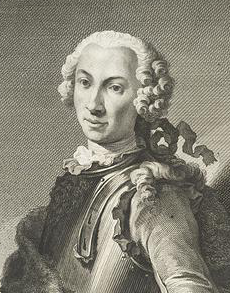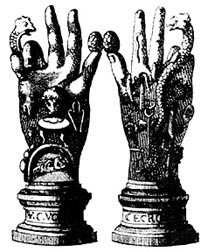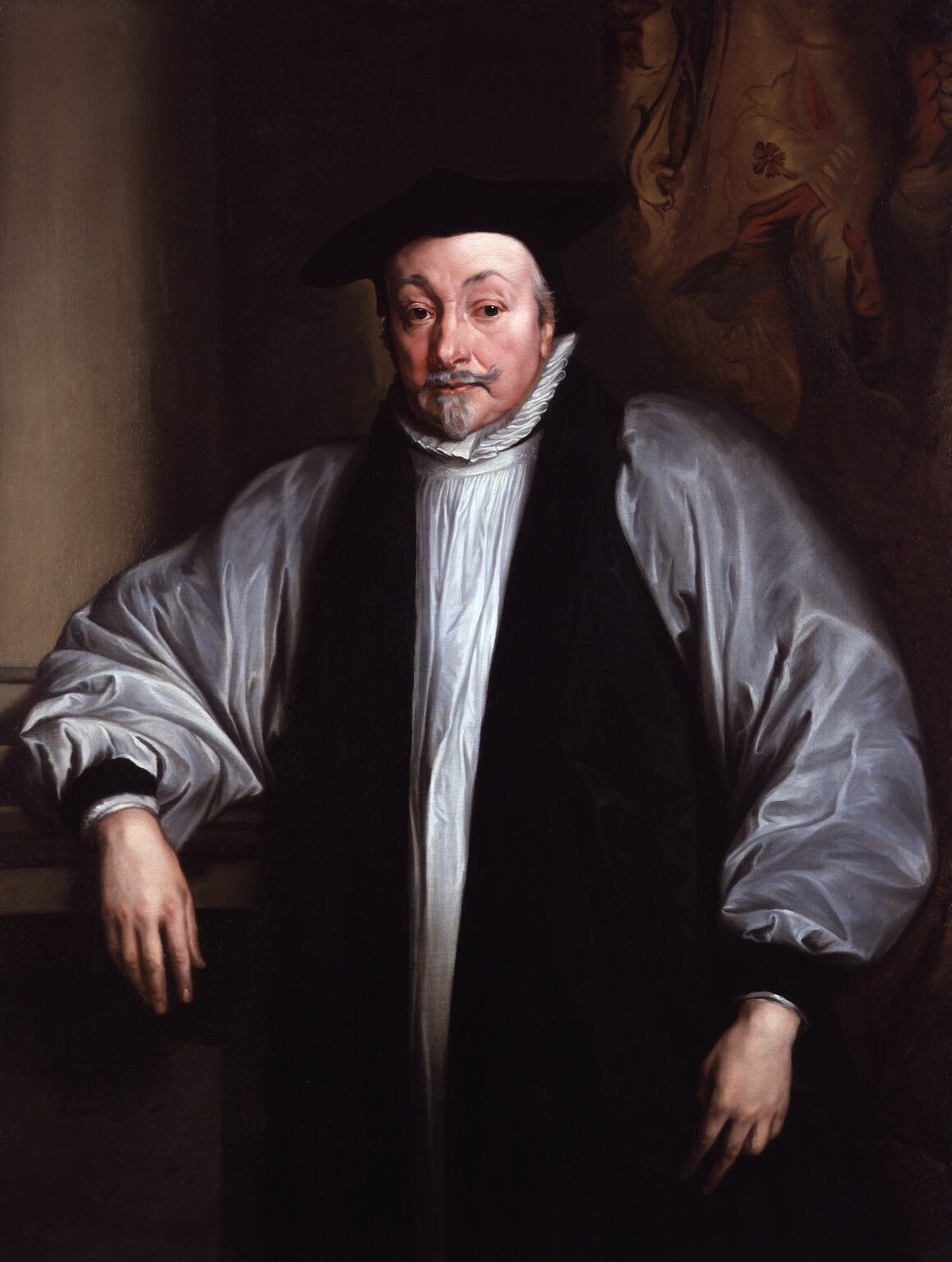|
Egyptian Revival Architecture In The British Isles
Egyptian Revival architecture in the British Isles is a survey of motifs derived from Ancient Egyptian sources occurring as an architectural style. Egyptian Revival architecture is comparatively rare in the British Isles. Obelisks start appearing in the 17th century, mainly as decorative features on buildings and by the 18th century they started to be used in some numbers as funerary or commemorative monuments. In the later 18th century, mausoleums started to be built based on pyramids, and sphinxes were used as decorative features associated with monuments or mounted on gate piers. The pylon, a doorway feature with spreading jambs which support a lintel, also started to be used and became popular with architects. As a result of the Napoleonic conquest of Egypt in 1798, more accurate records became available to architects and Egyptian Revival became a recognised architectural style. As the 19th century progressed Egyptian features were, on occasions, used for industrial buildi ... [...More Info...] [...Related Items...] OR: [Wikipedia] [Google] [Baidu] |
KV62
The tomb of Tutankhamun, also known by its tomb number, KV62, is the burial place of Tutankhamun (reigned c. 1334–1325 BC), a pharaoh of the Eighteenth Dynasty of ancient Egypt, in the Valley of the Kings. The tomb consists of four chambers and an entrance staircase and corridor. It is smaller and less extensively decorated than other Egyptian royal tombs of its time, and it probably originated as a tomb for a non-royal individual that was adapted for Tutankhamun's use after his premature death. Like other pharaohs, Tutankhamun was buried with a wide variety of funerary objects and personal possessions, such as coffins, furniture, clothing and jewellery, though in the unusually limited space these goods had to be densely packed. Robbers entered the tomb twice in the years immediately following the burial, but Tutankhamun's mummy and most of the burial goods remained intact. The tomb's low position, dug into the floor of the valley, allowed its entrance to be hidden by debris de ... [...More Info...] [...Related Items...] OR: [Wikipedia] [Google] [Baidu] |
Giambattista Piranesi
Giovanni Battista (or Giambattista) Piranesi (; also known as simply Piranesi; 4 October 1720 – 9 November 1778) was an Italian Classical archaeologist, architect, and artist, famous for his etchings of Rome and of fictitious and atmospheric "prisons" (''Carceri d'invenzione''). He was the father of Francesco Piranesi, Laura Piranesi and . Biography Piranesi was born in Venice, in the parish of S. Moisè where he was baptised. His father was a stonemason. His brother Andrea introduced him to Latin literature and ancient Greco-Roman civilization, and later he was apprenticed under his uncle, Matteo Lucchesi, who was a leading architect in ''Magistrato delle Acque'', the state organization responsible for engineering and restoring historical buildings. From 1740, he had an opportunity to work in Rome as a draughtsman for Marco Foscarini, the Venetian ambassador of the new Pope Benedict XIV. He resided in the Palazzo Venezia and studied under Giuseppe Vasi, who introduced him ... [...More Info...] [...Related Items...] OR: [Wikipedia] [Google] [Baidu] |
Voyage D'Egypte Et De Nubie
''Voyage d'Egypte et de Nubie'' (1755) records Frederic Louis Norden's extensive documentation and drawings of his voyage through Egypt in 1737–38. It contains some of the very first realistic drawings of Egyptian monuments and to this day remains a primary source for the looks of Egyptian monuments before widespread 19th and 20th-century tourism and excavations. The Royal Danish Academy of Sciences and Letters, under the order of Frederick V of Denmark, first published the book in 1755. Norden had already done some preliminary work, but got entangled in war-service for England and died in France 1742 of tuberculosis before anything was ready. He left his documents and drawings to his friend. Mark Tuscher from Nuremberg made the drawings into copperplates for the publication. Norden published some test drawings from his voyage in 1741, under the long name ''Drawings of Some Ruins and Colossal Statues at Thebes in Egypt, with an account of the same in a letter to the Royal S ... [...More Info...] [...Related Items...] OR: [Wikipedia] [Google] [Baidu] |
Frederic Louis Norden
Frederic Louis Norden (22 October 1708 – 22 September 1742) was a Danish naval captain, cartographer, and archaeological explorer. Also known as ''Frederick'', ''Frederik'', ''Friderick'', ''Ludwig'', ''Ludvig'' and ''Lewis'', names used on the publications of his famous ''Voyage d'Egypte et de Nubie''. Biography Norden was born in Holstein-Glückstadt. He entered the Royal Danish Naval Academy at Copenhagen in 1722. He was sent on a study mission abroad in 1732. Norden made a voyage through Egypt all the way down to Sudan in 1737–1738. At the request of King Christian VI of Denmark, he was to enter into a trade agreement with Ethiopia on behalf of Denmark. Norden made abundant notes, observations and drawings of everything around him, including people, pharaonic monuments, architecture, installations and maps. On 8 January 1741 he became a Fellow of the Royal Society of London (registered as ''Frederic Lewis Norden''). He died of tuberculosis the following ye ... [...More Info...] [...Related Items...] OR: [Wikipedia] [Google] [Baidu] |
Anne Claude De Caylus
Anne Claude de Tubières-Grimoard de Pestels de Lévis, ''comte de Caylus'', marquis d'Esternay, baron de Bransac (Anne Claude Philippe; 31 October, 16925 September 1765), was a French antiquarian, proto-archaeologist and man of letters. Born in Paris, he was the eldest son of Lieutenant-General Anne de Tubières, comte de Caylus. His mother, Marthe-Marguerite de Villette de Mursay, comtesse de Caylus (1673–1729), was the daughter of vice-admiral Philippe, Marquis de Villette-Mursay. His younger brother was Charles de Tubières de Caylus, who became a naval officer and governor of Martinique. He was a cousin of Mme de Maintenon, who brought Marthe-Marguerite up like her own daughter. Marthe-Marguerite wrote valuable ''Souvenirs'' of the court of Louis XIV; these were edited by Voltaire (1770), and by many later editors. Career While a young man, Caylus distinguished himself in the campaigns of the French army, from 1709 to 1714. After the peace of Rastatt (1714) he spent som ... [...More Info...] [...Related Items...] OR: [Wikipedia] [Google] [Baidu] |
Benoît De Maillet
Benoît de Maillet (Saint-Mihiel, 12 April 1656 – Marseille, 30 January 1738) was a well-travelled French diplomat and natural historian. He was French consul general at Cairo, and overseer in the Levant. He formulated an evolutionary hypothesis to explain the origin of the earth and its contents. De Maillet's geological observations convinced him that the earth could not have been created in an instant because the features of the crust indicate a slow development by natural processes. He also believed that creatures on the land were ultimately derived from creatures living in the seas. He believed in the natural origin of man. He estimated that the development of the earth took two billion years. Life De Maillet was a nobleman of Lorraine, born into a distinguished Catholic family. He did not attend university, but he received an excellent classical education. De Maillet was interested in geology and natural history, and took advantage of his travels to make observations. H ... [...More Info...] [...Related Items...] OR: [Wikipedia] [Google] [Baidu] |
Bernard De Montfaucon
Dom Bernard de Montfaucon, O.S.B. (; 13 January 1655 – 21 December 1741) was a French Benedictine monk of the Congregation of Saint Maur. He was an astute scholar who founded the discipline of palaeography, as well as being an editor of works of the Fathers of the Church. He is regarded as one of the founders of the modern discipline of archaeology. Early life Montfaucon was born on 13 January 1655 in the Castle of Soulatgé, a small village in the southern town of Corbières, then in the ancient Province of Languedoc, now in the modern Department of Aude. Other sources claimed his birth date is in 16 January, the most accepted date. After one year he was moved to the Castle of Roquetaillade, residence of his family. When he was seven, he was sent to Limoux, to the college run by the Fathers of Christian Doctrine. Career Montfaucon served in the French army as a volunteer and participated in the Franco-Dutch War of 1673. He was a captain of grenadiers and made two campaig ... [...More Info...] [...Related Items...] OR: [Wikipedia] [Google] [Baidu] |
Sphinx
A sphinx ( , grc, σφίγξ , Boeotian: , plural sphinxes or sphinges) is a mythical creature with the head of a human, the body of a lion, and the wings of a falcon. In Greek tradition, the sphinx has the head of a woman, the haunches of a lion, and the wings of a bird. She is mythicized as treacherous and merciless, and will kill and eat those who cannot answer her riddle. This deadly version of a sphinx appears in the myth and drama of Oedipus. Unlike the Greek sphinx, which was a woman, the Egyptian sphinx is typically shown as a man (an androsphinx ( grc, ανδρόσφιγξ)). In addition, the Egyptian sphinx was viewed as benevolent but having a ferocious strength similar to the malevolent Greek version. Both were thought of as guardians and often flank the entrances to temples. In European decorative art, the sphinx enjoyed a major revival during the Renaissance. Later, the sphinx image, initially very similar to the original Ancient Egyptian concept, was exported ... [...More Info...] [...Related Items...] OR: [Wikipedia] [Google] [Baidu] |
Pyramids
A pyramid (from el, πυραμίς ') is a structure whose outer surfaces are triangular and converge to a single step at the top, making the shape roughly a pyramid in the geometric sense. The base of a pyramid can be trilateral, quadrilateral, or of any polygon shape. As such, a pyramid has at least three outer triangular surfaces (at least four faces including the base). The square pyramid, with a square base and four triangular outer surfaces, is a common version. A pyramid's design, with the majority of the weight closer to the ground and with the pyramidion at the apex, means that less material higher up on the pyramid will be pushing down from above. This distribution of weight allowed early civilizations to create stable monumental structures. Civilizations in many parts of the world have built pyramids. The largest pyramid by volume is the Great Pyramid of Cholula, in the Mexican state of Puebla. For thousands of years, the largest structures on Earth were pyramid ... [...More Info...] [...Related Items...] OR: [Wikipedia] [Google] [Baidu] |
Nile
The Nile, , Bohairic , lg, Kiira , Nobiin language, Nobiin: Áman Dawū is a major north-flowing river in northeastern Africa. It flows into the Mediterranean Sea. The Nile is the longest river in Africa and has historically been considered the List of rivers by length, longest river in the world, though this has been contested by research suggesting that the Amazon River is slightly longer.Amazon Longer Than Nile River, Scientists Say Of the world's major rivers, the Nile is one of the smallest, as measured by annual flow in cubic metres of water. About long, its drainage basin covers eleven countries: the Democratic Republic of the Congo, Tanzania, Burundi, Rwanda, Uganda, Kenya, Ethiopia, Erit ... [...More Info...] [...Related Items...] OR: [Wikipedia] [Google] [Baidu] |
John Greaves
John Greaves (1602 – 8 October 1652) was an English mathematician, astronomer and antiquarian. Educated at Balliol College, Oxford, he was elected a Fellow of Merton College in 1624. He studied Persian and Arabic, acquired a number of old books and manuscripts for archbishop William Laud (some still in Merton College Library), and wrote a treatise (in Latin) on the Persian language. He travelled in Italy and the Levant from 1636 to 1640 and made a survey of the Great Pyramid of Giza. He was Gresham Professor of Geometry at Gresham College, London, and Savilian professor of astronomy at Oxford University, and collected astrolabes and astronomical measuring devices (now in the Museum of the History of Science, Oxford). He was particularly interested in the study of weights and measures, and wrote a treatise on the Roman foot and denarius, and was a keen numismatist. In 1645 he attempted a reform of the Julian calendar, which was not adopted. During the English Civil War he supp ... [...More Info...] [...Related Items...] OR: [Wikipedia] [Google] [Baidu] |










